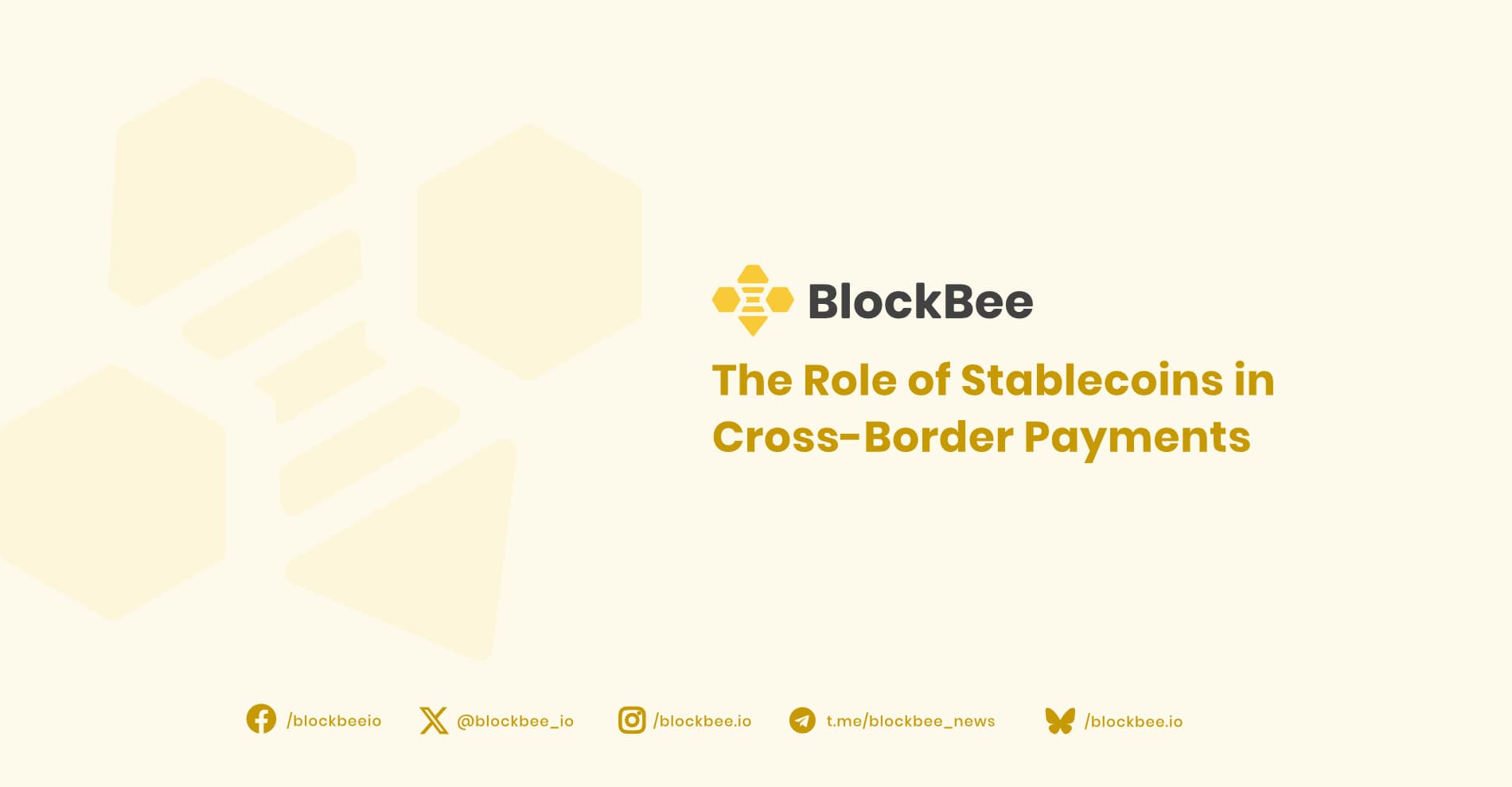
The Role of Stablecoins in Cross-Border Payments
Stablecoins simplify cross-border payments by offering low fees, fast settlement times, and protection against currency volatility, making them ideal for global trade, remittances, and digital commerce
Stablecoins are revolutionizing global payments by reducing fees, speeding up transactions, and offering price stability. With BlockBee’s tools and PYUSD support, businesses can easily integrate stablecoin payments and streamline international commerce.
The complexities of traditional cross-border payments have long been a barrier to seamless international commerce. High fees, delayed settlements, and currency fluctuations create significant challenges for businesses and individuals. Stablecoins, a type of cryptocurrency pegged to stable assets like fiat currencies, are revolutionizing the way cross-border transactions occur. In this blog, we’ll explore how stablecoins are addressing these pain points, transforming global payments into a faster, more affordable, and reliable process.
Understanding Stablecoins
Stablecoins are cryptocurrencies designed to maintain a stable value by being pegged to reserve assets like fiat currencies (e.g., USD or EUR) or commodities (e.g., gold). Unlike volatile cryptocurrencies like Bitcoin, stablecoins offer a predictable value, making them ideal for financial transactions.
Types of Stablecoins
- Fiat-backed stablecoins: These are backed by physical fiat reserves. Prominent examples include Tether (USDT), USD Coin (USDC), and PayPal's PYUSD. BlockBee's ecosystem now supports PYUSD, enhancing flexibility for secure, stable transactions. Discover PYUSD integration.
- Algorithmic stablecoins: Maintain stability using supply-and-demand mechanisms without being directly backed by reserves.
These stablecoins are gaining traction for their ability to reduce the uncertainties traditionally associated with cryptocurrencies.
Challenges of Traditional Cross-Border Payments
Traditional cross-border payments rely heavily on intermediaries like banks and payment processors, leading to inefficiencies:
- High transaction fees: Each intermediary charges its own processing fees, increasing the cost.
- Slow settlement times: Transactions can take days to complete due to banking hours and regulatory checks.
- Currency volatility: Fluctuating exchange rates add unpredictability, particularly for businesses managing international clients or suppliers.
Stablecoins provide a solution to these pain points, offering faster and more affordable alternatives.
How BlockBee Simplifies Stablecoin integration for Businesses
BlockBee provides a seamless way for businesses to integrate stablecoin payments into their systems:
- User-friendly dashboard: Simplifies setup and management. Discover BlockBee’s dashboard features.
- Support for multiple stablecoins: Offers flexibility and scalability for businesses.
- Transparent fee model: Ensures cost efficiency with automatic discounts for high transaction volumes.
Regulatory Considerations for Stablecoins in Cross-Border Transactions
As the adoption of stablecoins grows, global regulators are implementing frameworks to ensure their safe usage.
- The EU’s MiCA regulations aim to enhance trust and transparency in stablecoin markets.
- BlockBee’s integration of regulated stablecoins like PYUSD emphasizes compliance and builds confidence among users.
Businesses looking to adopt stablecoins must prioritize platforms that align with these regulations to ensure secure transactions.
Why Stablecoins Are Ideal for Cross-Border Transactions
Reduced Transaction Costs
Stablecoins eliminate the need for multiple intermediaries, significantly lowering transaction fees. Using platforms like BlockBee, businesses can further benefit from percentage-based fee models that adapt to transaction volumes.
Faster Settlement Times
Unlike traditional banking systems, stablecoin transactions are processed on blockchain networks, enabling near-instantaneous transfers. This speed is crucial for time-sensitive payments, such as international trade settlements.
Minimizing Volatility
Stablecoins mitigate the risks associated with currency fluctuations by being pegged to stable assets. For instance, USDC’s 1:1 backing with USD and MiCA compliance ensure predictable values, making it a reliable choice for businesses seeking stability in cross-border payments.
Real-World Applications of Stablecoins in Cross-Border Payments
International Trade and Commerce
Stablecoins enable businesses to pay international suppliers or accept payments from global customers without the hassle of currency conversion.
Remittances
Migrant workers can send money home using stablecoins, reducing fees and ensuring the funds arrive quickly. This is particularly impactful in regions where traditional remittance services are costly and inefficient.
Freelancing and Remote Work Payments
Freelancers increasingly prefer receiving payments in stablecoins due to their convenience and reliability, bypassing delays and fees associated with bank transfers. Check our “Storefront” feature.
The Future of Stablecoins in Cross-Border Transactions
The rise of central bank digital currencies (CBDCs) and increasing global adoption of blockchain technology signal a promising future for stablecoins. By addressing the inefficiencies of traditional systems, stablecoins are poised to dominate the cross-border payment landscape.
Businesses that integrate stablecoin payments now position themselves to thrive in this evolving digital economy. Platforms like BlockBee provide the tools and support needed to stay ahead in the competitive market for the Businesses to integrate to receive payments in cryptocurrency.
Conclusion
Stablecoins are revolutionizing cross-border payments, offering speed, affordability, and predictability. As global adoption grows, businesses and individuals alike can benefit from their transformative potential.
Start leveraging the power of stablecoins today with BlockBee’s crypto payment solutions and experience the future of seamless international transactions.
